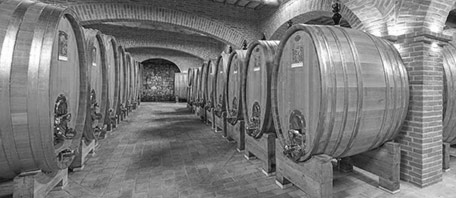
Which site would you like to visit?
By clicking the retail or wholesale site button and/or using rarewineco.com you are choosing to accept our use of cookies to provide you the best possible web experience.
Long a favorite among Nebbiolo cognoscenti, Brovia produces some of Piedmont’s most profoundly expressive wines. Yet, this cantina has long flown under the radar, only recently gaining recognition as one of Barolo’s traditional giants.
The quality Brovia has achieved over the past decade has seen the estate, in the words of Antonio Galloni, “jump into the upper echelon of Barolo producers.”
And, as with other old-school Langhe greats, their brilliance is not limited to Barolo. They also make a sublime Barbera ‘Alba “Sorì del Drago” as well as one of the most extraordinary examples to be found of Dolcetto, the rare “Solatio.”
Brovia ranks securely within our Top Ten of Langhe traditionalists, making some of the purest examples of Barolo imaginable. The keys are enviable vineyard holdings and an uncompromising old school philosophy.
Shrewd acquisitions made over the estate’s 150-year history provides fourth-generation directors Cristina and Elena Brovia—and Elena’s husband, winemaker Alex Sanchez—with old vines in some of Barolo’s greatest terroirs as their fruit sources.
Particularly well represented is Brovia’s home village of Castiglione Falletto, where the estate boasts 50-to-60 year old vines in Rocche and Villero, both named among Barolo’s ten greatest crus in Renato Ratti’s 1980 landmark Carta del Barolo. Brovia’s Garblèt Sué Barolo hails from vines planted in the 1970s in the Fiasco vineyard, another top Castiglione site made famous by Scavino’s “Bric del Fiasc.”
And in neighboring Serralunga d’Alba, the Ca’ Mia bottling comes from Brovia’s 1950s Nebbiolo planting in the Brea cru, listed among Barolo’s top ten sites in Galloni’s classification of the appellation’s vineyards. In time-honored fashion, Brovia continues to make their Barolos strictly from the hearts of these great sites, where the snow melts first.
This ensures not only the highest fruit quality for the Barolos, but it also provides excellent terroirs within the same vineyards for Barbera and Dolcetto.
And so, Brovia’s Barbera d’Alba “Sorì del Drago” comes from the sheltered, upper part of Fiasco, while their Dolcetto d’Alba “Solatio” is sourced from old Dolcetto vines in Brea.
The deep viticultural knowledge that Brovia has accumulated since the estate’s founding in 1863 results in fabulous fruit from all of their vines, and their methods in the cantina are strictly old school as well.
Fermentation of the Barolos is in cement tanks for about three weeks, with frequent pump-overs to keep temperatures cool. The wine is then racked into seasoned oak botti, where it remains for two years. Bottling is without filtration.
The results are among the greatest classic Barolos of our time. But, sadly, Brovia’s production is small, with only 450 cases each of Rocche and Villero, about 300 of Ca’ Mia and just 200 of Garblèt Sué are made annually, making them exceedingly hard to source.
The Barbera “Sorì del Drago” is just as classically made—concrete tank fermented, for one week, before racking to stainless steel for 15 to 18 months aging—and just tiny in its production. Like the Barolos it is a magical expression of glorious Barolo terroir, seen through a different lens.
The Dolcetto “Solatio”, however, is a whole other story. Almost all Dolcetto is made as a deliciously accessible wine, to be, as Bruno Giacosa puts it, “... the best wine there is for everyday.” But Brovia takes startling risks with their Dolcetto Solatio to make something far greater.
When the growing season allows it, the Brovias late-harvest their old Dolcetto vines in Serralunga’s Brea after the Nebbiolo, deliberately aiming for maximum ripeness. Classically aged in neutral wood, Solatio reveals the greatness of Brea for Dolcetto in a wine so dense, powerful and complex that the Brovias pour it after the Barolos in their tasting lineup.
But, because it is late harvested, conditions have to be just right for Solatio to be made—since the inaugural 1985 vintage, this has happened only 12 times, less than three times per decade. And, like the Barolos and the Barbera, production is microscopic, making it very rare indeed.
| Year | Description | Size | Notes | Avail/ Limit |
Price | |
|---|---|---|---|---|---|---|
 2020
2020
|
2020 Brovia Barolo | 12+ | $69.95 | add |
New discoveries, rare bottles of extraordinary provenance, limited time offers delivered to your inbox weekly. Be the first to know.
Please Wait
Adding to Cart.
...Loading...


By clicking the retail or wholesale site button and/or using rarewineco.com you are choosing to accept our use of cookies to provide you the best possible web experience.

